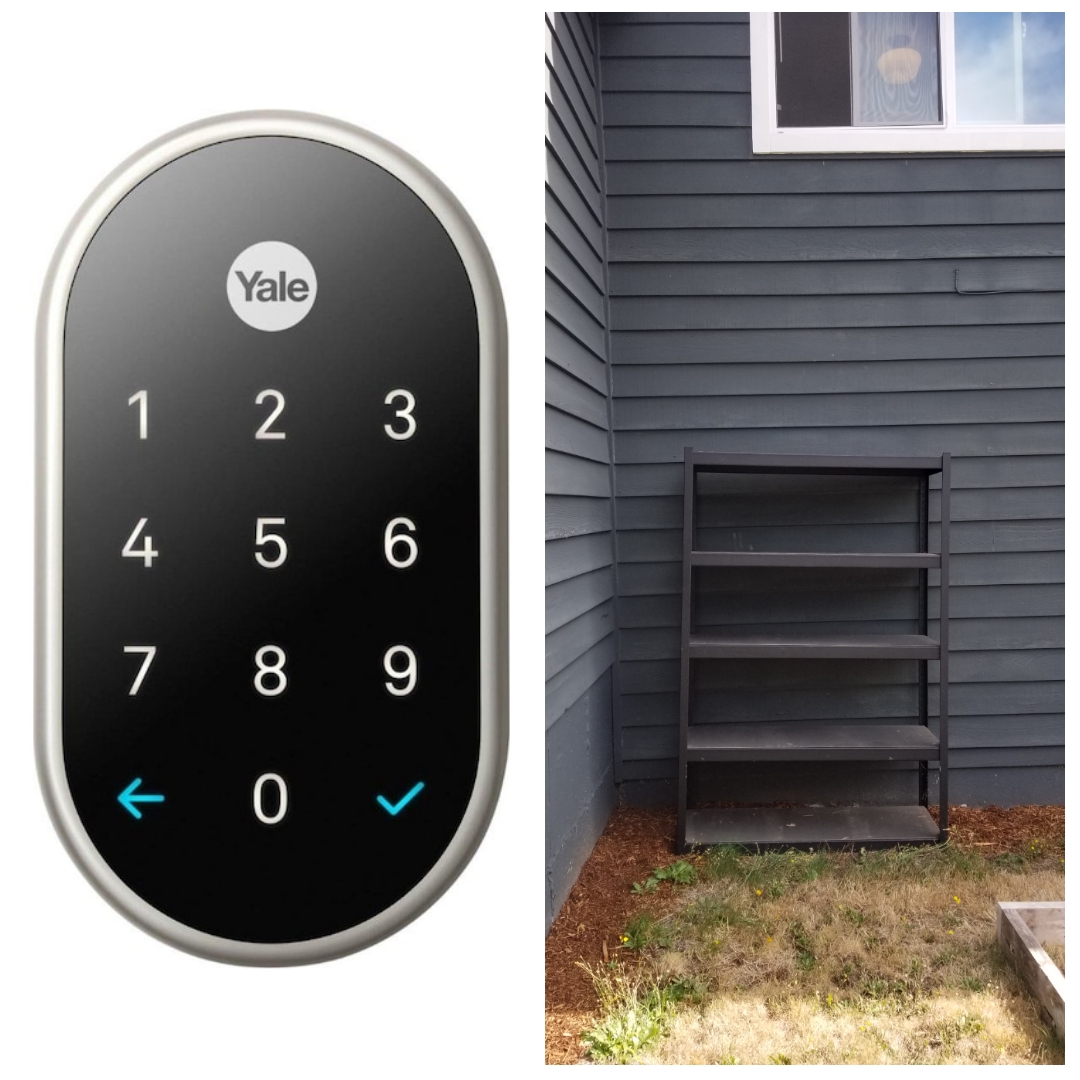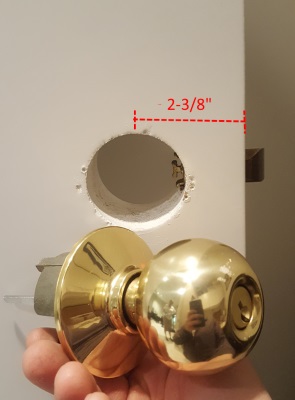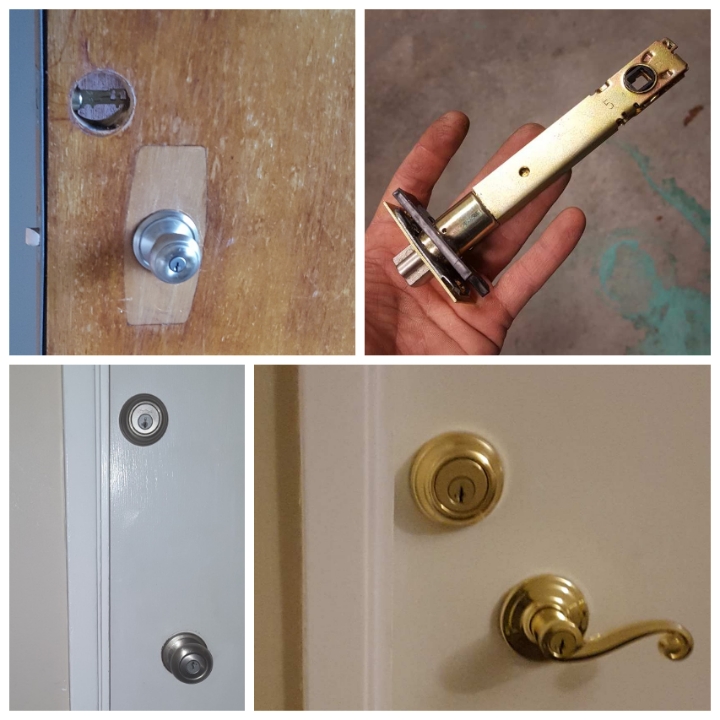Yale makes these slick keypad locks without any keyholes to speak of. I’m often thinking about how I’ll blast through one of these locks when it has failed and it’s on a customer’s only door. I almost had to play out this fantasy today when BOTH of the Yale keypad locks on my customer’s two doors failed at the same time.
Luckily, there was another way. On the back of the house there was a second-story window that had been left open. Also, the detached garage had an unlocked door, and inside there was a set of sturdy shelves that worked great as a ladder.
Lessons:
- Have at least one exterior door in your house that doesn’t rely solely on new technology for entry.
- Don’t leave ladders—or shelves, I guess—lying around outside your house.
- Lock all of your windows, even the ones upstairs.

 Commercial
Commercial 



 s prepped for lock installation. It refers to the distance between the edge of the door and the center of the door hardware. Most residential doors have a backset of 2-3/8” and most commercial doors use a slightly longer backset of 2-3/4”. These are not hardfast rules. Though some hardware is adjustable for either backset, it’s not always the case and sometimes you need to consider backset when ordering new locks.
s prepped for lock installation. It refers to the distance between the edge of the door and the center of the door hardware. Most residential doors have a backset of 2-3/8” and most commercial doors use a slightly longer backset of 2-3/4”. These are not hardfast rules. Though some hardware is adjustable for either backset, it’s not always the case and sometimes you need to consider backset when ordering new locks. locks fail because you can’t just walk into Home Depot and buy a lock made for one of these oddly prepped doors from the 1960s. In those days, houses were rarely secured with anything more than locking doorknobs, so it also presents an issue when you want to add a deadbolt to the door. You have to decide whether to install a deadbolt that’s out of alignment with the knob, or to find one with an extended latchbolt. If you take the latter route it will always be a hassle to service or replace the lock. I usually advocate for the offset.
locks fail because you can’t just walk into Home Depot and buy a lock made for one of these oddly prepped doors from the 1960s. In those days, houses were rarely secured with anything more than locking doorknobs, so it also presents an issue when you want to add a deadbolt to the door. You have to decide whether to install a deadbolt that’s out of alignment with the knob, or to find one with an extended latchbolt. If you take the latter route it will always be a hassle to service or replace the lock. I usually advocate for the offset.
